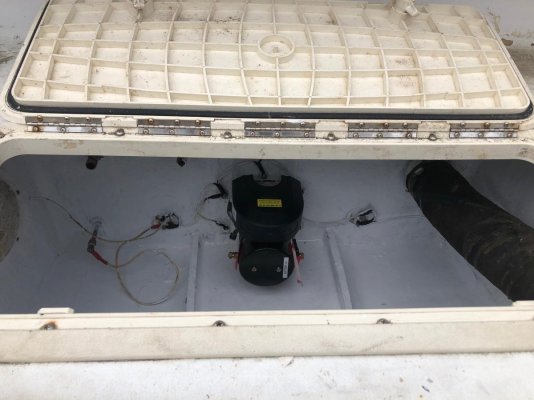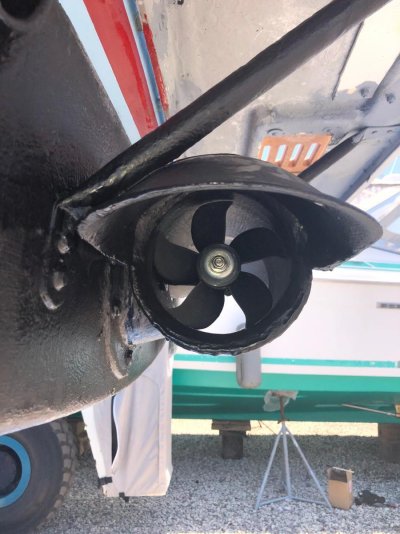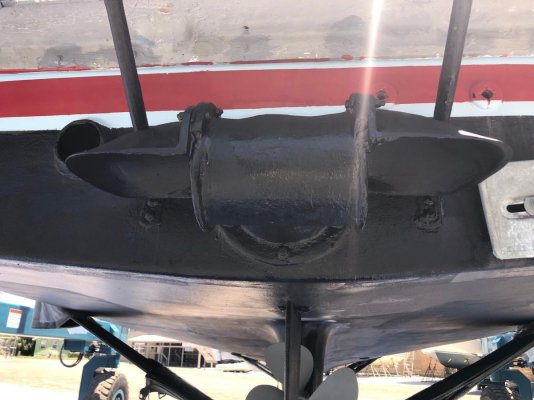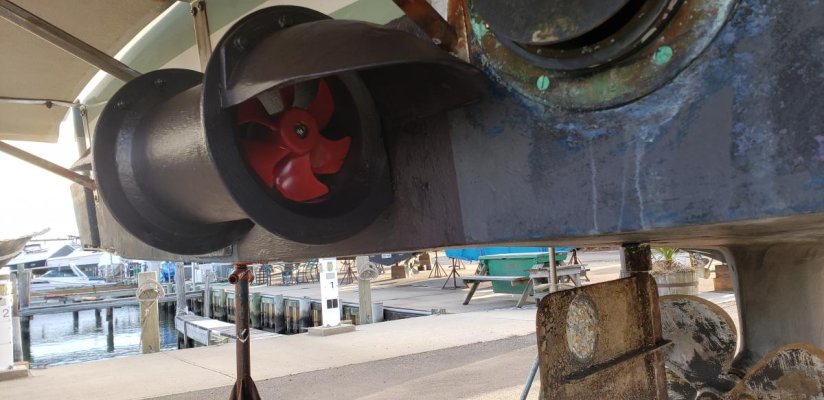I know this is old, but it was never resolved. Some have mentioned prop walk, but the thruster prop is in a tunnel. Some have mentioned differential pressures, but water is not compressible.
A thruster is a pump. It sucks in water and shoots out water. Where does it suck the water from? It does not suck the water in a direct line, it comes from all around its intake. Since water does not compress or decompress, something must enter the "hole" that the pump has made. Most of what enters the hole is other water, but one entire side of that hole is where the transom of the boat is, and so the boat is also going to move into that hole albeit very slowly. That would be the reversing effect you are seeing.
You may have noticed that I did not mention the output side. The output does go out in roughly a straight line. It might apply a small amount of pressure against the transom, but relatively small and effectively negated by the boat movement opposite the primary thrust direction.
It is worth noting that your engine/propeller is also a water pump and has a similar effect. The prop pulls water from generally beneath
and beside the hull. (Though less from the side in a hard chined hull.) If you pull up alongside a seawall or into a lock, that can suck you slightly towards the edge, no bow thruster needed - until you try to leave and it holds you against the side. In a canal, where there is actually very little water around the hull you might notice this effect when passing another boat. Especially a large one which takes up a lot more of the cross section of the canal and whose propeller is moving a lot of water. In a case like that, polite captains drop their engines into neutral just for a moment as they pass so they do not suck together and bump.
In Europe, if you sit next to a low bridge you will occasionally see a large boat approach the bridge and then firewall the throttle just as the house is about to hit. It looks suicidal, but then it does not hit. Why? Because they use the prop to pump the water out from beneath the hull and it drops low enough to clear the bridge. You obviously need to know this will work
before you try it.

You've all seen this effect when a planing hull boat is stationary and then you hit the throttles and the boat falls into "the hole". Then it has to climb out of the hole. I'm sure most people use the phrase figuratively, but it is really very apt. That sudden application of the throttle causes the prop to suck a lot of water out from beneath the boat and so it falls into the hole that has been created.
I have not had the luxury of using a bow thruster inside of a lock, but I suspect that the apparent thrust would be greatly magnified by proximity to the walls. Imagine if you were thrusting the boat towards the wall. The actual thrust is away from the wall and the intake is on the side of the boat that is approaching the wall. Hit your bow thruster and you will pull a lot of water out from between the boat and the wall. The boat will "fall" into that hole and could approach the wall more quickly than you had expected. A similar, but opposite "magnifying" effect would happen if you thrust away from the wall. You are going to pump a lot of water into that small space between the boat and the wall, so in addition to the direct thrust from the water jet, there is also that additional water pushing the boat away from the wall. I'm just guessing about this last paragraph, but it seems likely.






